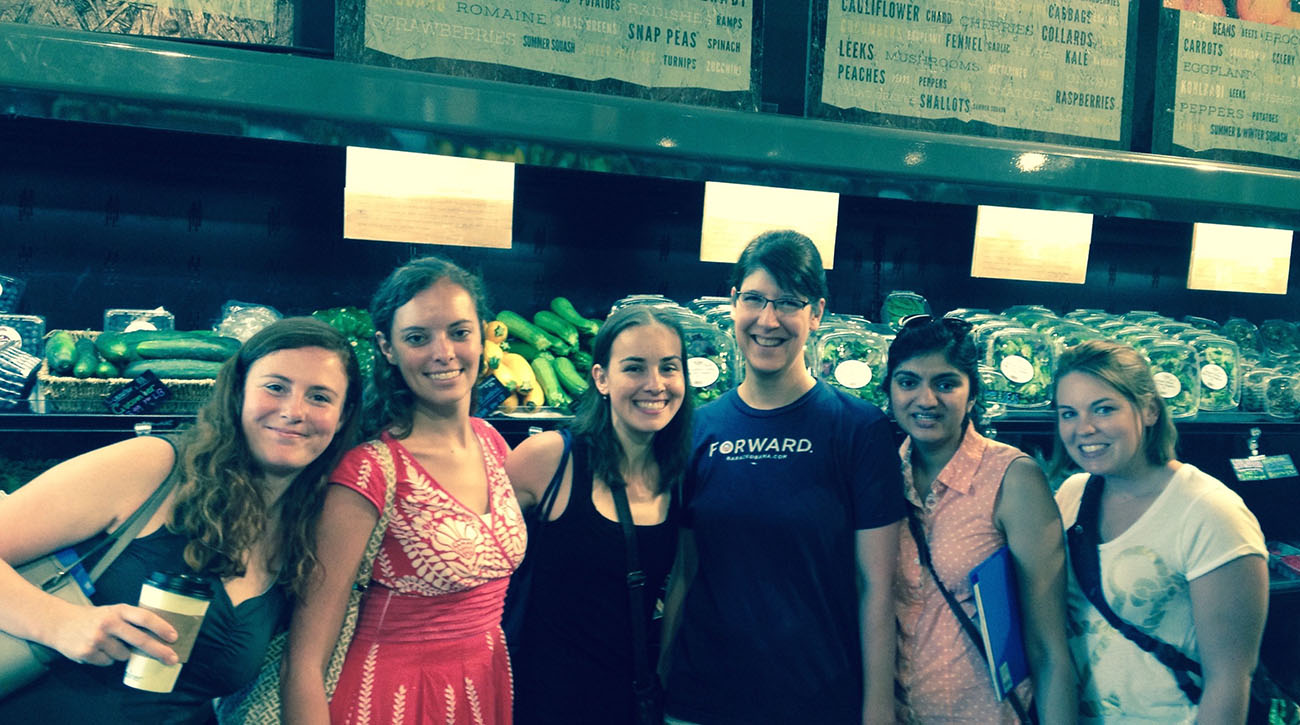Environmental scientists and nutritionists agree that diets containing more plant-based food and less animal-based food are better and more sustainable for both human and global health. Even though political pressure blocked sustainability from being a greater factor in 2015 Dietary Guidelines for Americans, researchers continue to investigate the availability and affordability of sustainable foods in communities across the US.
A team of researchers from George Washington University’s (GW’s) Milken Institute School of Public Health recently adapted an existing tool for assessing food environments so that it could be used to evaluate the availability and price of sustainably produced indicator foods in DC grocery stores. While the USDA had identified a number of Washington, DC’s eight Wards as “food deserts”, where residents have limited options for purchasing nutritious foods, data collected with the new tool show that healthy and sustainably produced food is now widely available in Washington, DC.
The impetus for the project was the desire by Sara Lupolt, who was then a student in the Department of Environmental and Occupational Health’s (EOH) Environmental Health Science and Policy MPH program, to investigate how easily DC residents could access sustainable food as part of the culminating experience project all students complete prior to graduation.
Because of her topic, Lupolt’s advisor for her culminating project was Exercise and Nutrition Sciences Associate Professor Kim Robien. “Defining what constitutes sustainably produced food is challenging,” Robien says. She and Lupolt built on the Healthy Food Availability Index tool developed by the Johns Hopkins Center for a Livable Future to create a new tool that they call the Healthy and Sustainable Food Availability Inventory (HSFAI).
Lupolt and Robien used the USDA National Organic Program’s food certifications as a means for collecting data on the presence and price of sustainable food with the new tool. The tool also “allows surveyors to review food labels and record keywords such as grass-fed, produced without hormones or antibiotics, cage-free, free-range, and pasture-raised that consumers may use to assess a food item’s sustainability,” points out Lupolt, who is now a CLF-Lerner Fellow at the Johns Hopkins Center for a Livable Future and is pursuing her PhD at Johns Hopkins University’s Bloomberg School of Public Health.
Lupolt’s culminating experience project also involved training seven surveyors on how to collect data with the tool. The photo above shows members of the team involved with surveying and the project. From left to right, they are: Kathryn (Katie) Merritt, Leslie Finnan, Sara Lupolt, Kim Robien, Mamta Chaudhari, and Andrea (Kelsey) McCracken. Like Lupolt, Meritt and Chaudhari are alumni of EOH’s Environmental Health Science and Policy program, and McCracken is an alumna of the department’s Global Environmental Health program. Finnan is an acquaintance of Lupolt’s who also attended graduate school at GW. (The efforts of everyone in the team, including Robien’s husband, who took the photo, are acknowledged in a new publication; keep reading for details.)
The team collected data from 46 supermarkets and grocery stores located in DC’s eight wards in one week in 2015. The collected data showed that while the prices for conventionally grown indicator foods, such as carrots, apples, and eggs, didn’t vary significantly, the prices for their organic counterparts did. “At least one brand of certified organic milk was available in 97% of the surveyed stores, but the prices for it varied most widely,” Lupolt says.
The results of the HSFAI showed that certified organic apples, carrots, eggs, ground beef, chicken, beans, and meat alternatives were less widely available, although they were still found in more than 50 percent of the surveyed stores. In their paper about the project, Lupolt and Robien stress that “our survey shows that, contrary to what some other previous studies have found in other cities, healthy and sustainably produced food is widely available in Washington, DC. However, we know that not all residents can afford healthy and sustainable food choices.”
Lupolt says that she learned quite a bit about the local DC food environment while conducting her culminating experience project. While it wasn’t information collected by the HSFAI tool, she also gained appreciation for the challenges consumers may encounter when trying to purchase sustainable food in DC, including economic, transportation and/or personal barriers. “It was a fun and eye-opening experience,” she says.
When she decided to try to publish her culminating experience research, Lupolt got some assistance from Robien, as well as EOH Assistant Professor Ami Zota, who Lupolt served as a teaching assistant for after graduating with her MPH and before entering her PhD program at Johns Hopkins. Amanda Buczynski of the Johns Hopkins Center for a Livable Future, who played a key role in developing the Healthy and Sustainable Food Availability Inventory, also contributed to the project and is a coauthor on the manuscript.
Lupolt, Robien, Buczynski and Zota’s paper, “Development of a Healthy and Sustainable Food Availability Inventory (HSFAI): an assessment of Washington, DC, grocery stores” is published in the Journal of Hunger & Environmental Nutrition.


